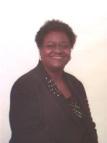|
The Emancipation Proclamation brought about massive racial separation in Protestant churches of the United States. Caucasian-Americans could no longer keep surveillance over African-American worship services.1 African-Americans had not wanted the surveillance of their worship services. Before the Civil War, they held sunrise prayer meetings to avoid Caucasian-American surveillance.2
African-Americans wanted to worship God under their own ministers. They also wanted the freedom to worship God as they pleased.3 (They praised God – often with fife and drum – for the defeat of the Confederacy!4)
After the Civil War, worship services in America continued to be integrated. However, Caucasian-Americans soon resented “the presence of large numbers” of African-Americans in “their churches”. African-Americans resented “domination of the services” by Caucasian-Americans.5
In the Methodist Episcopal Church, South, there were 225,000 African-American members of the church at the time of the Emancipation Proclamation. Following their emancipation from slavery, 145,000 African-Americans left the church and joined African Methodist Episcopal Church or African Methodist Episcopal Zion Church. In 1866, a commission representing the remaining 80,000 African- American members of the Methodist Episcopal Church, South requested a separation from the church to form their own church. The request was made to the 1870 General Conference that met in New Orleans. The conference voted to “transfer all of its remaining African-American constituency to” a new church.6 The new church was named Colored Methodist Episcopal Church. At the Memphis General Conference held May 1954, the church’s name was changed to Christian Methodist Episcopal Church.7
Between 1867 and 1878, the holiness “crusade” was widely accepted in both divisions of the Methodist Episcopal Church. There were several reasons for its acceptance. First, conservatives considered it to be a “bulwark” against the practices of young “progressive” ministers. These ministers were “urbane and highly educated” ministers who 1) introduced “organs and robed choirs” into the church. 2) Dispensed with “class meetings” and altar services for pursuing “holiness of heart”. 3) Admitted “new members without...previous indoctrination”. 4) Allowed “fashionable mode of dress” by church members.
Secondly, it was hoped the “crusade” would be a “bulwark” against “heretical teaching” by “progressive” ministers. Many of these ministers were educated in Germany. They held favorable views about German “higher critic’s” work. [Such critics questioned the inclusion of certain Scripture passages in the canon.] “Progressive” ministers also discussed Darwin’s Theory of Evolution and knew “too much about” it.8
Between 1870 and 1900, many American writers attacked what they called “outmoded theology”. Edward Eggleston questioned “primitive Methodism”. He called it inadequate. Harold Frederick and John W. DeForest advocated accommodating Darwin’s Theory of Evolution and rational thought as a means to “social salvation”.9
Thirdly, the “crusade” was seen as a means of unifying northern and southern Methodists. The Civil War and reconstruction had “caused a breach” between Methodists of the North and South. It was thought that “perfect love” as taught by John Wesley might “end bitter divisions” and help unite the nation.
Fourthly, the “crusade” might save the institution of camp meetings. The practice of holding camp meetings was discontinuing. “Well-built cottages” were replacing camp meeting grounds. Lectures on semi-religious and secular subjects were replacing “old-time revival services”.10
The Social Gospel movement arose between 1870 and 1900. The movement was a rejection of capitalism and capitalistic Christianity as well as a “call” for Christian Socialism. The movement affected the Methodist Church to the point that by 1908, the church had adopted the Social Creed of the Church and the Federal Council of Churches.11
However, in 1878, criticism of the Holiness movement surfaced in the Methodist Church. D. D. Whedon wrote in the Methodist Quarterly Review,
“The holiness association, the holiness periodical, the holiness prayer meeting, the holiness preacher are all modern novelties. They are not Wesleyan. We believe that a living Wesley would never admit them to the Methodist system.”
The criticism of the Holiness movement that became prevalent in the 1880s was largely due to “the independent character of the National Holiness Association”. Although the movement had been conceived and led by Methodists, it was interdenominational. This was “repugnant” to Methodist polity. Also, the majority of the Holiness literature published was outside Methodist Church control.
Another factor contributing to the growing opposition to the Holiness movement was the presence of “radical” holiness preachers. Such preachers were rural Methodists from the South and Middle West, “mostly from Kentucky, Iowa and Texas”. They preached a “radical brand of holiness”.
These “radical” preachers emphasized “dress and worldly amusements”. They also “denounced the coldness and formality of the Methodist Church”. In particular, the Texas Holiness Association had preachers who taught 1) “sinless perfection” 2) “freedom from death” 3) “marital purity” 4) ”the fire”, a third grace beyond sanctification 5) “abstinence from pork or coffee” 6) “all ‘doctors, drugs, and devils’ were done with when one is sanctified”. These points of emphasis had never been a part of the holiness movement. They were disturbing to “loyal churchmen and...the older leadership of the National Holiness Association”.
Atticus Green Haygood, a Methodist preacher from Georgia, “denied the need for a ‘second blessing’ of instantaneous holiness”. He did this in 1885, while preaching a sermon at the Oxford District Conference. Instead of instantaneous sanctification, Haygood advocated “a gradual attainment of the sanctified state”. He considered “[Holiness] teaching to be a ‘do-it-yourself’ doctrine of salvation”.
Opposition to sanctification also arose in Methodist seminaries. In 1884, Wilbur F. Tillett “challenged the concept of sanctification as taught by [Holiness] partisans”. Tillett was a Vanderbilt University theologian. He considered [Holiness] teaching to be a means to “convince Methodists that they could attain salvation through willing it”.
J. M. Boland published The Problem of Methodism in 1888. It questioned the “second blessing” and “Wesley’s advocacy of it”. The Southern Methodist Quarterly Review’s editor “applauded the volume” and advocated “an end to all doctrine” regarding “a second blessing”.
Works by George H. Hayes and James Mudges also indicted [Holiness] teaching. Hayes authored The Problem Solved. Mudges authored Growth in Holiness Toward Perfection, or Progressive Sanctification.
Just as there were critics of the holiness “crusade” in the Methodist Church, there were also defenders of the movement. These defenders voiced their sentiments as loudly as the critics. Leonidas Rosser was an early defender of the holiness “crusade”. He was editor of the Southern Methodist Review. He cautioned Methodists against “law without liberty” stating
“Methodism, itself a great holiness association was organized in the Church of England…Let all [who oppose] these associations…show their errors, excesses, and evils, or withdraw their opposition; for in opposing them they oppose Methodism.”
John P. Brooks, of Bloomington, Illinois was a longtime editor of The Banner of Holiness. He denounced the Methodist Church for its “easy, indulgent, accommodating, mammonized…Wesleyanism which tolerated church parties, festivals, and costly temples to gratify its pride”. Brooks left the church in 1885.
Daniel Steele wrote A Defense of Christian Perfection in 1896. He had previously written Love Enthroned, in 1877. It was a “[Holiness] classic”. Steele entered the holiness controversy by writing his later work.
Lovick Pierce wrote A Miscellaneous Essay on Entire Sanctification: How It Was Lost to the Church and How It May and Must Be Regained in 1897. Pierce was a “staunch defender of the holiness movement”. In this volume he stated,
“Methodism was never so nearly divorced from holiness as it is now…holiness meetings are absolutely ridiculed by some of our people…[the church is] turned over to Satan and the world”.
George W. Wilson wrote Methodist Theology vs. Methodist Theologians in 1904. The book was “a bruising attack on…intellectuals who…criticized cherished holiness beliefs”. In it Wilson stated,
“New England Methodism, where much of this new theology is born, is slowly dying...[because of] spiritual compromise in urbane congregations.”
Wilson believed church members had been distracted “from attending revivals” by “dancing, card playing and the theater”.
The Pickett-Smith debate of August 1896 exemplified the bitterness that existed within the Methodist Church over holiness. The debate was held in Terrell, Texas. Fourteen debates were held, arguing five points of doctrine. Pickett defended holiness views. Smith opposed them. Although it is believed Pickett “prevailed”, the debate erupted in strife and bitterness.
The controversy over holiness in the Methodist church polarized holiness critics and supporters. Methodist Church “defenders” became less loyal to holiness doctrine. “Defenders” of holiness doctrine became less loyal to the Methodist Church.
In the Methodist Episcopal Church, South, “holiness preachers” were assigned to “hard-scrabble” circuits to “lessen their influence”. Pastors equipped with an “anti-holiness squad” succeeded holiness pastors who had successfully indoctrinated congregations. The succeeding pastor’s assigned task was to “correct his predecessor’s folly”.
In 1885, most “holiness” preachers of the North Georgia Conference were assigned to the Gainesville District. This was done in hope that the “contagion” of holiness would be localized. However, “holiness advocates took over the district”. In Wesleyan Advocate of Georgia, one writer “complained”,
In the Methodist Episcopal Church, South, the controversy climaxed during the General Conference of 1894. Atticus Haygood had been made bishop. A statement was written disavowing the holiness “crusade” and declaring “open warfare” on holiness proponents. The statement read,
“But there has sprung up among us a party with holiness as a watchword; they have holiness associations, holiness meetings, holiness preachers, holiness evangelists, and holiness property. Religious experience is represented as if it consists of only two steps, the first step out of condemnation into peace and the next step into Christian perfection. The effect is to disparage the new birth, and all stages of spiritual growth from the blade to the full corn in the ear....We do not question the sincerity and zeal of these brethren; we desire the church to profit by their earnest preaching and godly example; but we deplore their teaching and methods in so far as they claim a monopoly of the experience, practice, and advocacy of holiness, and separate themselves from the body of ministers and disciples.”
This statement had been written with the Gainesville District episode in mind. It also resembled a previous sentiment expressed in Georgia’s Wesleyan Advocate.12
After the statement of the 1894 General Conference of the Methodist Episcopal Church, South was issued, many Methodists who were supporters of holiness left the church. To them there was no longer any “hope of re-creating the Methodist Church in a holiness image”. J. H. King, a pastor in Royston, Georgia, left the Methodist Church in 1898. B. F. Haynes, President of Asbury College in Kentucky and a “one-time editor” of Tennessee Methodist also left the church. Haynes wrote of his turmoil over his decision in Tempest-Tossed on Methodist Seas. In it he stated, life was “simply one of protest...[his] voice and pen [had] been kept busy in dissent”. Other Methodists from others regions of the nation also left. Phineas Bresee and Dr. J. P. Widney of California also left the church. However, not all holiness supporters left the Methodist Church. A. J. Jarrell, Lovick Pierce and Asbury Dodge, all of Georgia remained with the church until their deaths.13
In 1939, Methodist Episcopal Church, Methodist Episcopal Church, South and Methodist Protestants merged to form United Methodist Church. Methodist Protestants had seceded from Methodist Episcopal Church in 1830. The Conference “adopted a new constitution in three stages”: 1) “an abridgment of the Articles of Religion” drawn by John Wesley 2) “General Rules, covering the conduct of church members and the duties of church officials” 3) “Articles of Organization and Government, outlining the organization and conduct of conferences and local officials”. The constitution “cannot be changed by any General Conference unless and until every annual conference has acted upon the proposed changes.”14
However, not all members of Methodist Episcopal Church, South agreed with the merger. Some objected to merging with Methodist Episcopal Church “on the grounds of ‘alarming infidelity and apostasy found therein’”. The dissenting group formed Southern Methodist Church.15
| 
